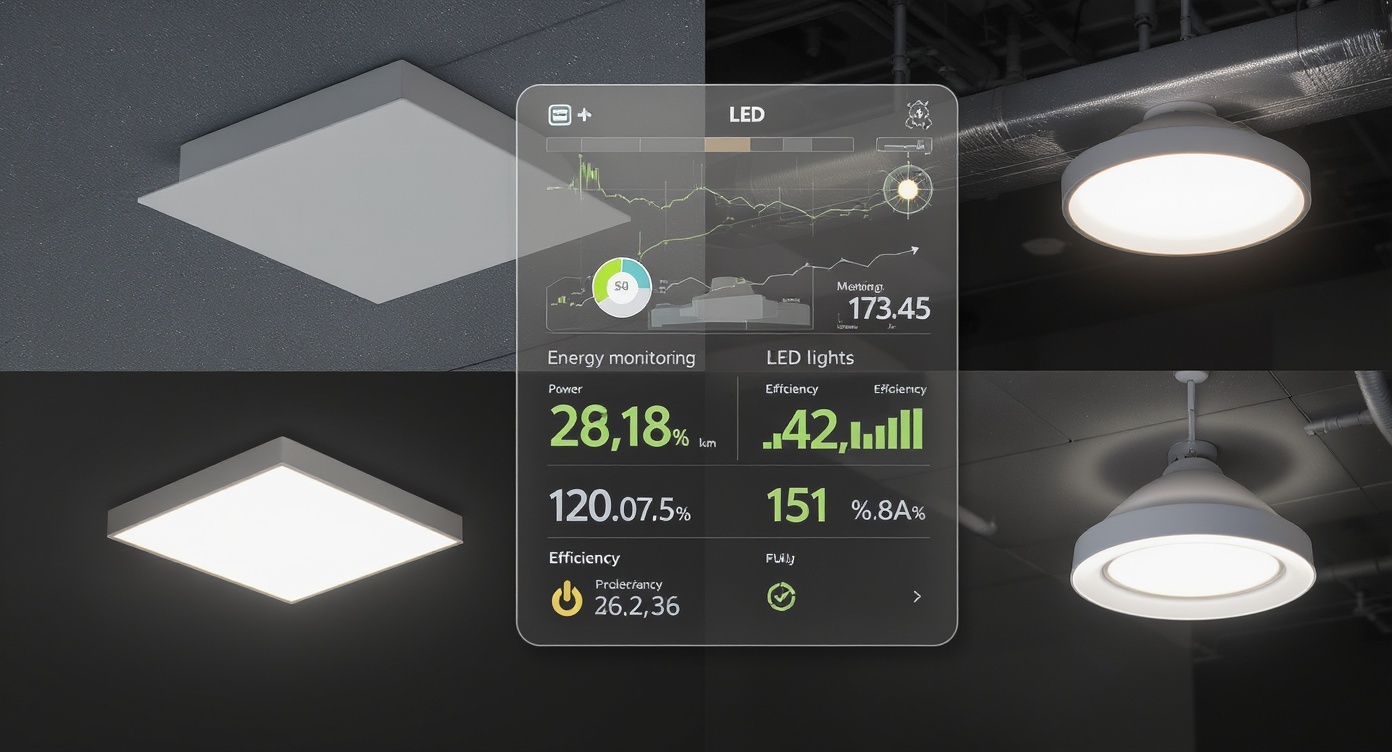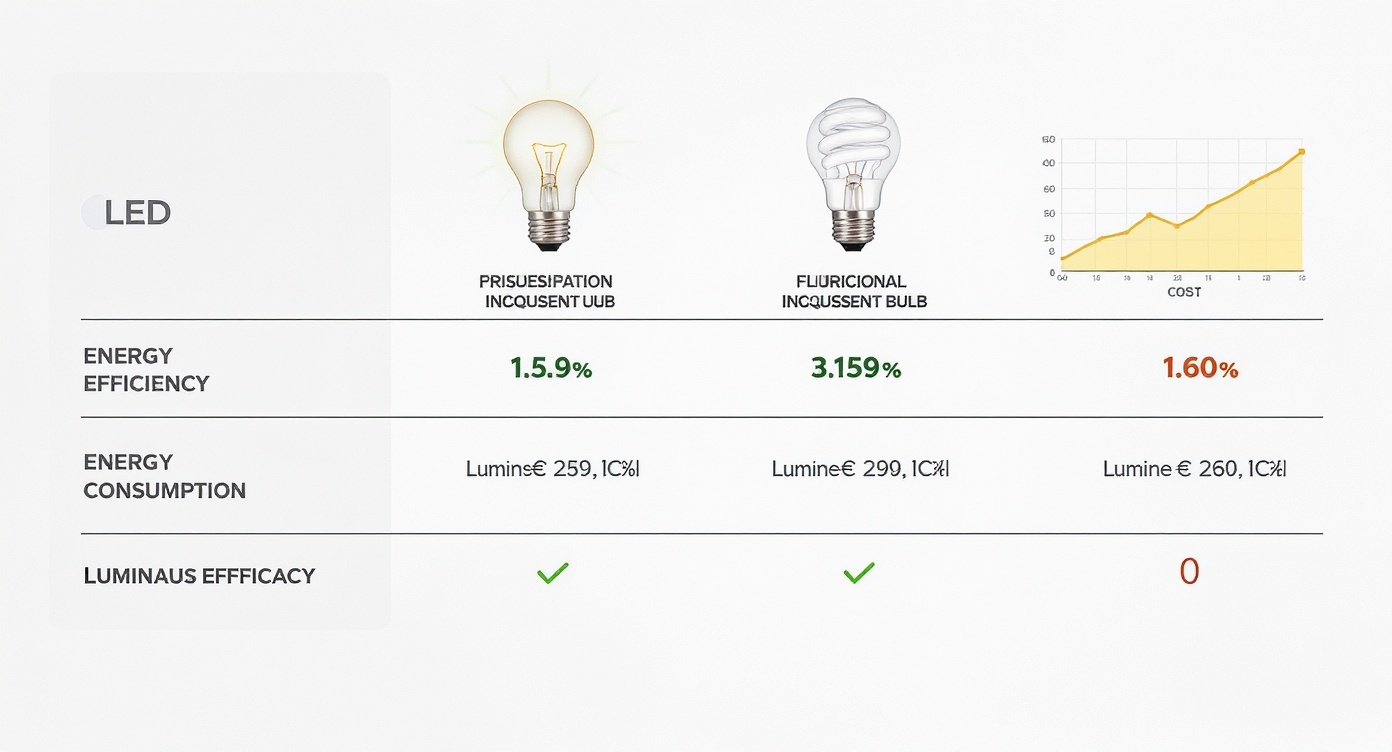The transition to light-emitting diode technology represents one of the most significant advances in energy-efficient illumination since the invention of the electric lamp itself. Understanding the sophisticated metrics behind LED energy efficiency enables facility managers, electrical engineers, and lighting designers to make informed decisions that substantially impact both operational costs and environmental sustainability.

Modern LED technology achieves luminous efficacy levels that fundamentally redefine energy consumption expectations in commercial and residential lighting applications. The physics underlying LED operation creates inherent advantages over traditional incandescent and fluorescent technologies through direct electroluminescence conversion processes that minimize thermal energy losses.
Understanding Luminous Efficacy Fundamentals
Luminous efficacy serves as the primary metric for evaluating LED energy performance, measured in lumens per watt. This fundamental relationship between light output and electrical power consumption determines the true efficiency potential of any lighting installation. Contemporary high-quality LED fixtures achieve luminous efficacy ratings ranging from 100 to 200 lumens per watt, compared to incandescent bulbs that typically produce only 10 to 17 lumens per watt.
The calculation methodology for determining actual energy savings requires comprehensive analysis of existing baseline consumption patterns, proposed LED specifications, and operational hour projections. Professional energy audits reveal that direct wattage comparisons often underestimate total system efficiency gains because LED technology provides superior light distribution characteristics and reduced maintenance requirements.
Advanced LED chips manufactured using gallium nitride substrates demonstrate exceptional performance stability across temperature variations, maintaining consistent luminous output throughout their operational lifespan. This thermal stability translates directly into predictable energy consumption patterns that enable accurate long-term cost projections.
| Technology Type | Luminous Efficacy (lm/W) | Typical Lifespan (Hours) | Initial Cost Factor |
| Incandescent | 10-17 | 1,000 | 1.0x |
| Compact Fluorescent | 45-75 | 8,000 | 3.5x |
| LED Standard | 80-120 | 25,000 | 8.0x |
| LED Premium | 120-200 | 50,000 | 15.0x |
Advanced Energy Consumption Calculations
Accurate energy consumption modeling requires sophisticated analysis that encompasses multiple variables beyond simple wattage multiplication. The comprehensive calculation framework considers dimming capabilities, power factor corrections, driver efficiency ratings, and thermal management impacts on overall system performance.
Professional-grade LED fixtures incorporate intelligent driver circuits that optimize power delivery based on real-time operating conditions. These adaptive systems automatically adjust current levels to maintain consistent light output while minimizing energy waste through parasitic losses. The resulting efficiency improvements often exceed theoretical calculations by 15 to 25 percent under actual operating conditions.
Power quality considerations significantly influence LED energy efficiency in commercial installations. Harmonic distortion from traditional lighting systems creates additional energy costs through reactive power penalties, while high-quality LED drivers maintain power factor ratings above 0.95, eliminating these inefficiencies.
The mathematical foundation for comprehensive energy savings calculations incorporates multiple efficiency factors that compound to create substantial operational improvements. Annual energy consumption equals the product of fixture wattage, daily operating hours, operational days per year, and efficiency degradation factors specific to each technology type.
Economic Analysis and Payback Calculations
Financial justification for LED installations requires sophisticated economic analysis that accounts for total cost of ownership rather than simple initial purchase price comparisons. The comprehensive financial model incorporates acquisition costs, installation expenses, energy savings, maintenance reductions, and replacement cycle variations.
Professional lighting audits consistently demonstrate that LED installations achieve positive cash flow within 18 to 36 months in most commercial applications. The accelerated payback period results from combined energy savings and dramatically reduced maintenance requirements, particularly in applications with difficult access or continuous operation schedules.

Energy cost calculations must incorporate regional electricity rate structures, including demand charges and time-of-use pricing variations. Peak demand reduction capabilities of LED systems provide additional savings through lower utility demand charges, particularly in commercial and industrial facilities with significant lighting loads during peak rate periods.
The net present value analysis for LED investments typically demonstrates positive returns even under conservative energy price escalation assumptions. The extended operational lifespan of quality LED fixtures provides continued savings benefits for decades, creating substantial long-term value that traditional lighting technologies cannot match.
| Application Type | Annual Operating Hours | Energy Savings (%) | Typical Payback (Months) |
| Office Buildings | 3,500 | 60-75 | 24-30 |
| Retail Spaces | 4,200 | 65-80 | 18-24 |
| Manufacturing | 6,000 | 70-85 | 12-18 |
| Outdoor Security | 8,760 | 75-90 | 15-20 |
Professional Equipment Selection Criteria
Successful LED implementation depends on sophisticated equipment selection processes that evaluate performance characteristics, compatibility requirements, and long-term reliability factors. The selection methodology must consider luminaire distribution patterns, color rendering capabilities, dimming compatibility, and environmental operating conditions.
High-performance LED fixtures require careful evaluation of thermal management systems that maintain optimal junction temperatures throughout the operational lifespan. Inadequate thermal design results in accelerated lumen depreciation and shortened operational life, negating the economic advantages of LED technology.
Color rendering index requirements vary significantly across different applications, with critical visual tasks requiring CRI ratings above 90, while general illumination applications perform adequately with CRI ratings between 80 and 85. The relationship between color rendering quality and luminous efficacy requires careful optimization to achieve desired visual outcomes without compromising energy efficiency.
Driver quality represents a critical factor in overall system reliability and performance consistency. Professional-grade LED drivers incorporate sophisticated protection circuits that prevent damage from voltage fluctuations, power surges, and thermal overload conditions while maintaining stable light output across varying input conditions.
System Integration and Performance Optimization
Advanced LED installations benefit from intelligent control systems that maximize energy efficiency through occupancy sensing, daylight harvesting, and automated scheduling capabilities. These integrated approaches often achieve additional energy savings of 20 to 40 percent beyond basic LED fixture replacements.
Daylight harvesting systems automatically adjust artificial lighting levels based on available natural illumination, maintaining consistent workspace illumination while minimizing energy consumption during daylight hours. The sophisticated photosensor networks required for effective daylight harvesting justify their implementation costs through substantial energy savings in perimeter zones with significant natural light access.
Occupancy-based control strategies provide exceptional energy savings in spaces with intermittent use patterns. Advanced microwave and infrared sensing technologies enable precise occupancy detection while minimizing false triggering that could compromise user satisfaction or safety requirements.
The integration of LED technology with building automation systems creates opportunities for comprehensive energy management strategies that optimize lighting performance based on real-time occupancy patterns, environmental conditions, and energy cost structures. These intelligent systems continuously adapt to changing conditions while maintaining optimal illumination quality and minimizing operational costs.
Professional commissioning processes ensure that LED installations achieve their designed performance levels through systematic testing and optimization procedures. Proper commissioning identifies configuration issues, verifies control system operation, and establishes baseline performance metrics for ongoing energy management activities.
The technological advancement in LED efficiency continues through ongoing research in quantum dot technologies, micro-LED architectures, and advanced phosphor formulations. These emerging technologies promise further improvements in luminous efficacy while expanding application possibilities in specialized environments with unique performance requirements.
Quality LED installations require comprehensive warranty structures that protect against premature failures while ensuring consistent performance throughout the design life. Professional lighting manufacturers provide extended warranty coverage that reflects confidence in their product reliability while protecting end users from unexpected replacement costs.
The environmental benefits of LED technology extend beyond energy efficiency through reduced material consumption, elimination of hazardous substances, and enhanced recyclability characteristics. Life cycle analysis demonstrates that LED fixtures provide superior environmental performance across all impact categories when compared to traditional lighting technologies.
Implementation success depends on professional design practices that optimize fixture placement, control system configuration, and maintenance procedures to achieve maximum efficiency benefits while meeting all applicable illumination standards and user requirements. The sophisticated nature of modern LED technology requires specialized expertise to realize its full potential in energy efficiency applications.
 voltora5.com
voltora5.com